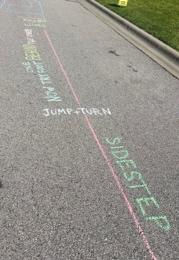Music and Language Connections
- All Care Therapies

- Jan 13, 2022
- 1 min read

Have you ever caught yourself or your child singing a new tune and somehow remembering every word in the song? Research suggests that music activates the right side of the brain to compensate and strengthen pathways for language and speech on the left side. Furthermore, music and language seem to grow from a common source of interest ever since birth, and musical elements aid in learning linguistic functions such as sound patterns, meaning, and syntax. And, you do not need to be a fantastic singer or be excellent at an instrument to implement music in everyday routines! Bilinguistics has many fun and easy songs (with materials) that you can sing with your child to facilitate language and speech development at home both in Spanish and English: https://bilinguistics.com/music-for-speech-therapy/. These songs can be sung before bedtime, during playtime, or even at mealtime. Songs can also be paired with gestures and movement to support motor movement and gestural communication. Happy singing!
Sources:
Jusczyk, P. W., & Krumhansl, C. L. (1993). Pitch and rhythmic patterns affecting infants’ sensitivity to musical phrase structure. Journal of Experimental Psychology: Human Perception and Performance, 19(3), 627–640. https://doi.org/10.1037/0096-1523.19.3.627
Fernald, A. (1989). Intonation and Communicative Intent in Mothers’ Speech to Infants: Is the Melody the Message? Child Development, 60(6), 1497. https://doi.org/10.2307/1130938
Jun, P., MD. (2021, January 29). Music, Rhythm, And The Brain. Brain World. https://brainworldmagazine.com/music-rhythm-brain/#:%7E:text=Right%20Brain%20Or%20Left%20Brain,right%20side%20of%20the%20brain.
Music For Speech Therapy. (2019). Bilinguistics. https://www.google.com/url?q=https://bilinguistics.com/music-for-speech-therapy/&sa=D&source=editors&ust=1627270831436000&usg=AOvVaw1cxPQlcPA7ObzUH6XASEOz




Comments